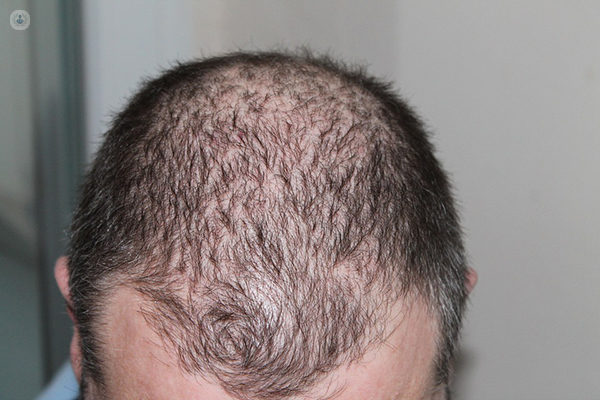


What is a micrograft hair transplant?
A micrograft hair transplant or follicular transplant is an aesthetic technique for repopulating the scalp with hair in areas where there is alopecia or intense hair loss. Using the patient's own hair for a more natural result, it is performed under local anaesthesia. The main advantage of this treatment is that the patient is the donor and there is minimal scarring that is very easily concealed – even with very short hair.
Why is a micrograft hair transplant done?
Micrografting is very popular especially among men who are balding or losing hair, women who experience intense hair loss, patients with alopecia, and patients who want to increase hair volume or cover sparsely populated areas in the beard, eyebrows or genitals. Some patients who have undergone chemotherapy or radiotherapy treatment also go for this treatment after suffering hair loss.
What does micrograft hair transplant technique consist of?
It is a microsurgery, a very simple intervention on a case-by-case basis requiring one or two sessions. There are several techniques for hair implants, but they consist of extracting hair follicles from populated areas to graft them in the area that needs more hair, obtaining a dense and natural appearance. The main techniques that are currently used are:
- FUE (follicular unit extraction) – a very fine instrument called a punch is used to extract each individual hair follicle, leaving behind no linear scars.
- FUT (follicular unit transplantation) – faster, with a greater survivability rate for the transplanted follicles, this technique extracts a thin, linear strip of follicles from the back or side of the scalp, which is then dissected to yield a number of individual grafts.
Preparation for micrograft hair transplanting
The micrograft hair transplant does not require prior preparation. A consultation with the specialist prior to the procedure will allow them to analyse the patient’s condition and plan the micrograft hair transplant.
Care after the intervention
Being a simple intervention performed with local anaesthesia, it does not necessarily require hospitalisation. The body should recognises the micrograft as its own tissues and shouldn’t reject the transplant. Scarring is minimal.
In the first few days after the procedure, you should use an antiseptic shampoo and avoid saunas, exercise and sun exposure. The patient must come to the consultation 10 days after the intervention to have the stitches removed.
